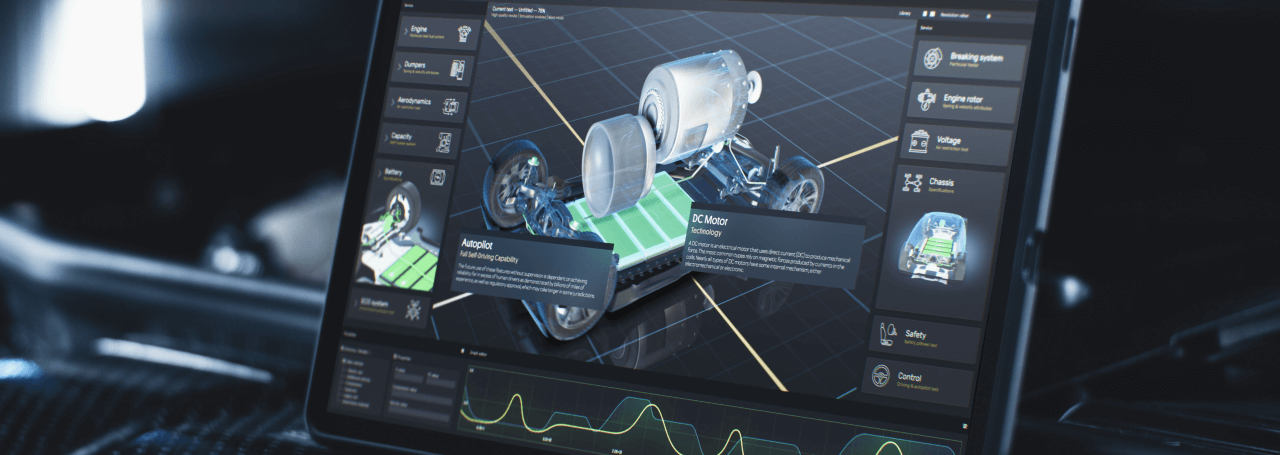PART 2.
Case studies on temperature resilience
and remote power management
In this article you will find detailed information on our client’s real-world problems and successful solutions we provided to craft the perfect-working outdoor display.
Topics covered from an engineer’s and decision-maker’s perspective:
- Case study: Outdoor parcel locker display
- Importance of choosing the right display for outdoor applications
- Solutions for high-temperature issues in displays
- Case study: Power management in outdoor devices with remote power supply
- Recommendations for selecting outdoor displays
Case study:
Outdoor parcel locker display
One of the most interesting case studies involves an outdoor application for a parcel terminal. Initially, the customer selected a low-cost display. They tested the touchscreen in a controlled, laboratory environment, exposing it to temperatures ranging from -20°C to 50°C. Despite passing these tests, the display was not suitable for real-world outdoor use, as it was only rated by the manufacturer for temperatures between 0°C and 50°C.


Problem with heat accumulation
During the summer, the parcel locker’s display experienced issues due to accumulating the heat from the sun. This problem, known as the blackening defect or blackout, occurs when the liquid crystals in the display enter an isotropic phase at high temperatures, making the screen unusable.
TFT LCD (Thin Film Transistor) functions normally in the nematic phase, where the liquid crystal can control the light. When it enters the isotropic phase, the polarization of light cannot be changed. The light passes through the liquid crystal without any control by voltage or other means, making it impossible to switch the pixels on and off.
The consumer-grade glass previously selected by the customer in the case discussed above, could not withstand temperatures above 50°C. Direct sunlight raised the surface temperature to 90°C, causing the display to stop working.
Solutions for high-temperature issues in displays
To address this issue, Riverdi’s engineering team recommended using industrial-grade Hi-Tni (high temperature twisted nematic–isotropic) glass, which can operate at surface temperatures of up to 85°C or even 110°C. By changing the liquid crystal technology, we solved the customer’s problem, enabling the device to function reliably in demanding environments with strong sunlight.
Key tips for high-temperature display solutions:
- Select Hi-Tni glass:
Ensure the display glass can withstand high surface temperatures. - Understand the temperature range:
Verify the display’s operational temperature range.
Test in real-world conditions:
Conduct tests simulating realistic outdoor conditions, including direct sunlight exposure.

Case study:
Power management in outdoor devices with remote electricity supply
Another critical aspect of outdoor applications is power management. This is especially important for devices like vending machines that must operate remotely without a stable electricity supply. High-brightness displays, essential for readability outdoors, consume significant power. However, many outdoor devices rely on batteries and solar panels only. This presents a fundamental challenge: how to design a machine with a readable display and low energy consumption?
The solution is in Riverdi’s touchscreens, which separate the power supply for the TFT (Thin Film Transistor) display and the backlight. This design enables flexible power management. For example, the backlight can be dimmed or turned off to save power when the device is in standby mode. At the same time the touchscreen remains operational with minimal power consumption of approximately 10 mA. Consumers are familiar with such solutions in their phones and tablets, so they will intuitively know that tapping the outdoor device’s screen will turn on the backlight.
Power management strategies:
- Separate power supplies:
Use displays with independent power controls for the TFT and the backlight. - Dim or turn off backlight:
Reduce power consumption by managing the backlight in the standby mode. - Use low power touchscreens:
Ensure the touchscreen remains functional with minimal power use.
Recommendations for selecting outdoor displays
If you plan to build an outdoor device, we recommend starting with Riverdi’s standard 1000 candela IPS High Brightness Display series. These displays come in various sizes and interfaces, and have no MOQ (Minimum Order Quantity), making them ideal for testing. Additionally, for specific needs such as touchscreens with higher brightness, thicker glass for vandal-proofing or functionality with water drops and gloves, we offer customized solutions.
Further key considerations for outdoor displays:
- High brightness levels:
Ensure the display is bright enough for outdoor visibility. - Durable glass:
Consider thicker, vandal-proof glass for added protection. - Touch functionality:
Ensure the display works with water drops and gloves.
CHECK OUT RIVERDI’S OUTDOOR-READY PRODUCTS
Be sure to find the right industrial-grade display for your project:
- Need to enhance the brightness and optical performance of your outdoor display?
Choose High Brightness IPS Displays with optical bonding that perfectly reduce the reflection and correct contrast. - In search of the most effective data interchange between graphics and a truly industrial touch controller?
Check BT817Q (EVE 4) product category with revolutionary communication protocol for industrial, medical and military applications requiring beautiful and sophisticated GUI. - Looking for one of the highest resolution (1280×800 pixel) HMI displays based on STM32H7 MCUs?
Choose STM32 STM32 Embedded Displays with high performance enabled by STM32H757XIH6 (2MB Flash, 1MB RAM) microcontroller.
- Need a plug and play HDMI interface and USB-C touch solution?
Pick the HDMI Displays that are high-resolution, high-brightness IPS TFT products with optical/air bonding and industrial grade touch screen as Riverdi’s standard.
CONTACT US
Contact our expert to dive deeper into the industrial-grade outdoor displays for your project.
Having issues with your current technology? Want to learn about frameworks and our clients’ success stories? We are happy to discuss and assist you with your design and R&D challenges.
DISCOVER OUR
Whitepaper
Achieve the perfect user-display interaction with the right Touch Sensor IC. Ever faced issues with phantom touch events or certification? Boost your R&D like a pro with our Whitepaper!


